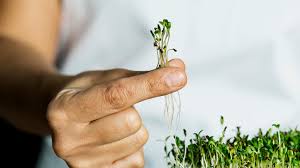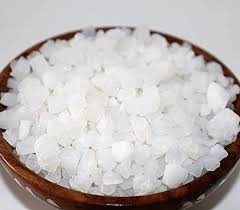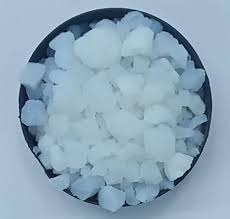
The Use of Banslochan in Tibetan Herbal Medicine
Banslochan, also known as bamboo silica or Tabasheer, has been a revered component in various traditional healing systems across Asia, including Ayurveda, Unani, and Tibetan medicine. In Tibetan herbalism, Banslochan holds a special place due to its cooling, strengthening, and adaptogenic properties. Rooted in centuries-old spiritual and medicinal practices, Tibetan healers have used Banslochan not just for physical healing, but also for emotional and energetic balance. This article explores in-depth how Banslochan is utilized in Tibetan herbal medicine and highlights its significance in holistic wellness approaches within Tibetan healing systems.
Long Description
- Understanding Banslochan: An Overview
Banslochan is a siliceous substance derived from the inner joints of certain bamboo species, particularly Bambusa arundinacea. It appears as a translucent, chalky, white to greyish substance and is rich in bioavailable silica and trace minerals. In Tibetan and Ayurvedic contexts, Banslochan is believed to possess potent cooling, demulcent, and rejuvenative properties. It has been traditionally used to treat ailments ranging from fevers and respiratory issues to mental stress and weakened immunity. - Tibetan Medicine: A Holistic Healing Tradition
Tibetan medicine, also called Sowa-Rigpa, is one of the world’s oldest holistic medical systems. It integrates elements from Ayurveda, Chinese medicine, Greek and Persian influences, and indigenous Tibetan knowledge. This system considers the harmony of the three humors (Lung, Tripha, and Beken) essential to health. Herbal formulas are prescribed with precise combinations of natural ingredients, including minerals, herbs, and animal products, tailored to balance a patient’s doshic constitution. - The Role of Banslochan in Tibetan Healing Philosophy
In Sowa-Rigpa, Banslochan is primarily categorized as a cooling and harmonizing substance. Its use is recommended in formulations targeting imbalances of Lung (wind humor), which governs mental activity, nervous system functioning, and subtle energy movement. An aggravated Lung is often associated with anxiety, restlessness, dry skin, and sleep disturbances. The calming properties of Banslochan are thus ideal for rebalancing the body and mind.
Additionally, Banslochan is used for:
Reducing excess internal heat (Tripha imbalance)
Healing respiratory disorders caused by dry cough or inflammation
Replenishing weakened bodily tissues (Dhatus)
Treating chronic fatigue and nervous exhaustion
- Key Tibetan Formulas Involving Banslochan
In Tibetan pharmacy, Banslochan is rarely used alone. It is often combined with herbs like Amla (Phyllanthus emblica), Shilajit, Licorice (Glycyrrhiza glabra), and Sandalwood in powder or decoction forms. Some of the most popular compound formulations include:
Norbu Dutsi (Precious Nectar Pills) – includes minerals and herbs for longevity, where Banslochan is used for its cooling and strengthening effect.
Tsotel formulations – in complex detoxifying pills for treating mental imbalances and spiritual disorders, often administered under guidance.
Herbal Ashes – Banslochan is sometimes processed into calcined ash used in minute doses for enhancing immunity and nourishing the nerves.
- Spiritual Significance of Banslochan in Tibetan Practice
Beyond physical healing, Banslochan holds symbolic significance in Tibetan Buddhism. It is often used in ritual offerings and sacred formulations prepared by monks. These preparations are believed to have both material and spiritual healing powers, cleansing the mind of delusions and strengthening prana (life energy).
In tantric traditions, Banslochan is thought to harmonize subtle energies within the body, making it suitable for yogic and meditative practitioners. It is believed to open energetic pathways and help stabilize inner winds (Tibetan: rlung), which govern concentration and inner awareness.
- Banslochan and Respiratory Health in the Himalayas
Given the harsh and dry climate in the Himalayan regions, respiratory and lung ailments are common. Tibetan practitioners use Banslochan in syrup and decoction forms to soothe dry throat, bronchial irritation, and hoarseness. Its mucilaginous property helps coat the throat and reduce inflammation.
Some traditional remedies include:
Banslochan + Honey + Rock Sugar: For soothing dry cough
Banslochan + Ginger: For balancing cold-induced respiratory issues
Banslochan mixed with milk: For calming both the body and mind in stressful conditions
- Nutritional and Rejuvenating Uses in Tibetan Culture
In traditional Tibetan households, Banslochan is often mixed with milk or ghee and consumed as a health tonic. It is believed to strengthen bones, improve stamina, and rejuvenate weak nerves. Monks and elderly people often use it as part of their regular wellness regimens to stay agile and mentally alert.
It is also used post-illness recovery to rebuild strength, especially in children and elderly patients. As a rich source of silica, Banslochan supports healthy skin, nails, joints, and connective tissue.
- Ethical Sourcing and Sustainability Concerns
Tibetan medicine emphasizes a deep respect for nature and its resources. The harvesting of Banslochan is traditionally done with care to ensure sustainability. However, with increasing demand and commercialization, overharvesting and adulteration are becoming issues. Authentic Tibetan medicine practitioners often ensure their ingredients are sourced from trusted, ecological farms or collected via age-old sustainable methods.
Consumers should be cautious about sourcing high-quality, genuine Banslochan to experience its true benefits and to support the conservation of bamboo ecosystems.
- Modern Research on Banslochan and Tibetan Medicine
While empirical evidence from Tibetan medicine supports Banslochan’s calming and cooling properties, modern research is now exploring its chemical and therapeutic composition. Studies have shown that bamboo silica contains:
High levels of Silicon Dioxide, essential for bone health and collagen synthesis
Anti-inflammatory and antioxidant properties
Potential neuroprotective effects useful for managing anxiety and mental fatigue
Collaborative efforts between Tibetan medicine institutions and modern research labs aim to validate these ancient formulations for broader healthcare applications.
- Integration of Banslochan in Holistic Wellness Today
Modern holistic health practitioners are increasingly turning to Tibetan and Ayurvedic botanicals to complement integrative therapies. Banslochan is now available in various forms—capsules, powders, elixirs, and teas—for use in yoga, meditation, and wellness retreats. These adaptogenic qualities make it suitable for people dealing with urban stress, sleep disorders, and emotional burnout.
Health coaches and alternative therapists recommend Banslochan for:
Improving cognitive clarity and reducing mental fog
Supporting hormonal balance in women
Aiding detoxification and tissue regeneration
Reducing hyperacidity and gastrointestinal inflammation
Conclusion
The use of Banslochan in Tibetan herbal medicine illustrates the depth and wisdom of ancient healing traditions. Its calming, nourishing, and adaptogenic nature aligns with the Tibetan principles of balancing energies for optimal health. Whether for respiratory relief, mental peace, or holistic rejuvenation, Banslochan remains a precious ingredient revered by traditional healers and increasingly appreciated by modern wellness seekers. When used responsibly and ethically, Banslochan continues to serve as a bridge between ancient Tibetan knowledge and contemporary holistic healing.










